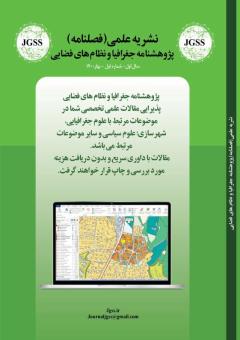تناقض راهبردهای امنیتی ناتو در خاورمیانه بررسی مقایسهای بحران لیبی و سوریه
محورهای موضوعی : جغرافیای سیاسیحسین سوری 1 , ابراهیم خلیلی لاریمی 2 , رضا قلی زاده شمس 3
1 - دانشگاه آزاد علوم تحقیقات
2 - دانشگاه علوم و فنون فارابی
3 - دانشگاه آزاد علوم تحقیقات
کلید واژه: ناتو, خاورمیانه, بحران لیبی, بحران سوریه, مداخله بشردوستانه,
چکیده مقاله :
ناتو بعد از جنگ سرد تلاش کرد با توسل به عملیاتهای بشردوستانه، دامنه نفوذ امنیتی خود را در مناطق پیرامونی از جمله خاورمیانه گسترش دهد. ناتو طی سالهای گذشته با دو بحران امنیتی بزرگ در مرزهای جنوبی خود یعنی بحران لیبی و سوریه مواجه بوده است که در برخورد با هر کدام از این بحران ها، راهبرد امنیتی متفاوتی را در پیش گرفته است. راهبرد مداخله نظامی در لیبی (2011) و راهبرد عدم مداخله در سوریه نه تنها نشانگر تناقضهای عملی در راهبردهای امنیتی بلکه بازتاب تناقضهای هنجاری در رویکردهای امنیتی ناتو است. بر این اساس، سوال اصلی مقاله این است که عوامل بهوجودآورنده این تناقضهای عملی و هنجاری ناتو به خصوص در قبال بحرانهای منطقهای از جمله دو بحران بزرگ لیبی و سوریه کدامها هستند؟ تز اصلی مقاله این است که تفاوت در رویکرد قدرتهای بزرگ رقیب ناتو، نقش بازیگران منطقهای نوظهور و توانمندی داخلی کشورهای هدف، مهمترین عوامل بهوجودآورنده راهبردهای امنیتی متناقض ناتو در قبال بحرانهای منطقهای بوده است.
After the Cold War, NATO sought to revise its security identity through humanitarian operations aimed at preventing humanitarian catastrophes in various countries. But in fact, NATO has sought to extend its security influence to the peripheral regions, including the Middle East, by resorting to humanitarian operations. NATO has faced two major security crises on its southern borders, the Libyan and Syrian crises over the past few years, which have adopted a different security strategy in dealing with each of these crises. The Military Intervention Strategy in Libya (2011) and the Non-Intervention Strategy in Syria not only reflect practical inconsistencies in security strategies but also reflect normative inconsistencies in NATO security approaches. The contradictions are so profound that US and French presidents have been critical of NATO, calling it an "obsolete" and "brain dead" organization. Accordingly, the main question of the paper is what are the factors that create these practical and normative contradictions of NATO, especially in relation to the regional crises, including the two major crises of Libya and Syria? The paper hypothesized that the differences in the approach of major rival NATO powers, the role of emerging regional actors, and the different domestic capabilities of the target countries, have been the most important factors that have produced contradiction in NATO security strategies for coping with regional crises.


